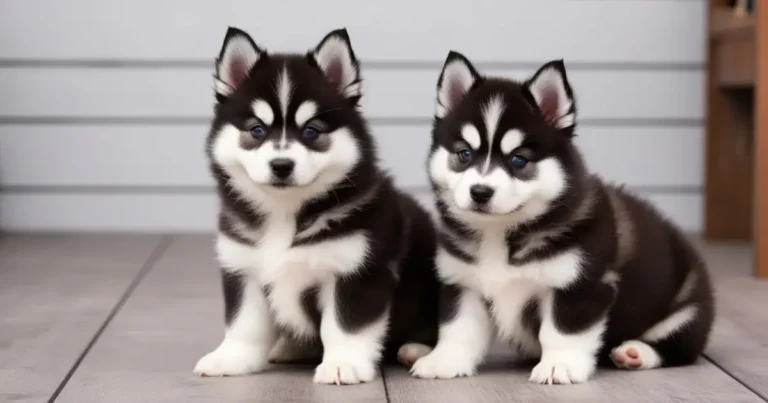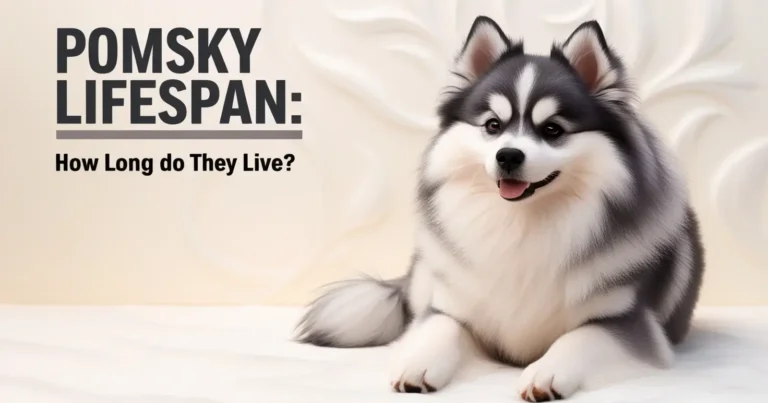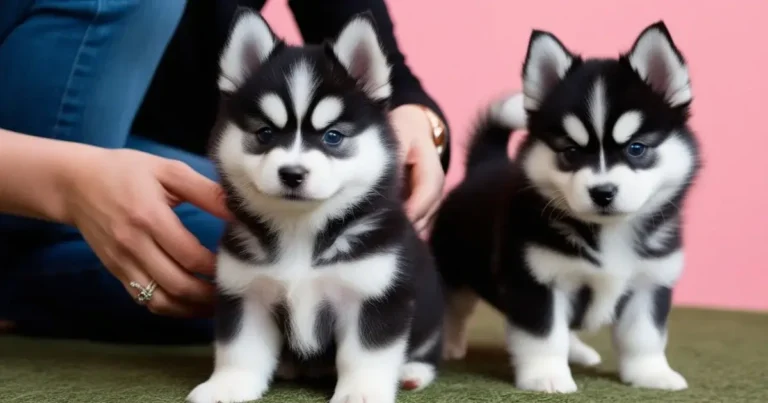Pomsky Feeding Guide: Nutrition, Portions, and Essential Diet Tips
A balanced diet is essential for your Pomsky to stay happy, healthy, and energetic. The right food ensures your furry friend thrives. In this guide, you’ll learn about the best Pomsky diet, including the feeding schedule, portion sizes, food types, and what to avoid.
Table of Contents
Understanding Pomsky Nutritional Needs
Pomskies inherit traits from both Pomeranians and Siberian Huskies. Pomeranians are small and lively, while Huskies are medium-sized with high endurance. This mix means your Pomsky needs a diet rich in:
- Proteins for strong muscles
- Healthy fats for energy
- Carbohydrates for an energy boost
- Vitamins and minerals for overall health
High Energy Levels and Nutritional Demands
Since Pomskies are energetic, they need a well-balanced diet. Proteins and fats provide energy, while carbohydrates help maintain stamina. Ensuring proper vitamins and minerals supports long-term well-being.
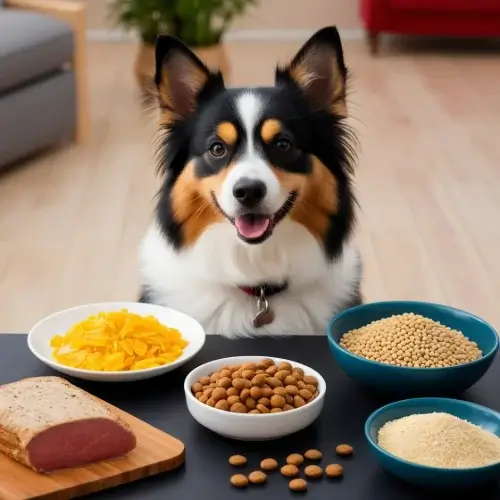
Recommended Feeding Schedule for Pomskies
Puppies (2-6 months):
- 3 meals daily, with an option for snacks.
Adult Pomskies (6+ months):
- 2 meals daily with healthy snacks.
Adjust meals based on your Pomsky’s age and activity level:
- More active days need increased portions.
- Less active days require smaller portions.
Portion Sizes: How Much Should You Feed Your Pomsky?
Portion sizes depend on your Pomsky’s weight and activity level. Here’s a simple guide:
| Weight Range | Portion Size Per Day |
| 2-4 lbs | 1/3 to 1/2 cup |
| 5-9 lbs | 1/2 to 1 cup |
| 10-15 lbs | 1 to 1 1/2 cups |
Factors to Consider:
- Active Pomskies need more calories.
- Dry food is more calorie-dense than wet food, so you may need smaller portions.
Wet vs Dry Food: Which is Better for Your Pomsky?
Choosing between wet and dry food depends on your Pomsky’s preferences. Here’s a quick comparison:
Dry Food:
- Pros: Promotes dental health, easy to store, cost-effective.
- Cons: May be less appealing to picky eaters.
Wet Food:
- Pros: Tasty and contains more moisture.
- Cons: May cause loose stools and is harder to store.
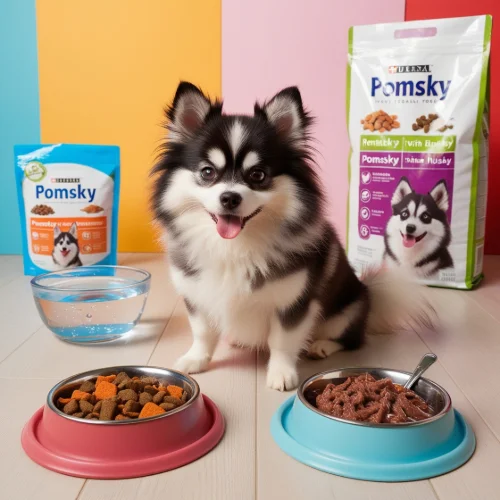
You can mix wet and dry food to balance benefits and keep your Pomsky interested.
Commercial Dog Food Recommendations
When choosing the best dog food for Pomsky, opt for brands with high-quality ingredients. Look for real meat as the first ingredient and avoid fillers. Some top recommendations include:
- Blue Buffalo: High-protein recipes.
- Wellness CORE: Real meat and healthy fats.
- Orijen: Protein-packed with essential nutrients.
Focus on food that has omega-3 fatty acids and antioxidants to support Pomsky nutrition and overall health.
Homemade Diet Options for Pomskies
If you want more control over your Pomsky’s diet, homemade meals are a great option. This allows you to avoid allergens and ensure your dog gets fresh, healthy food.
Recipe Examples:
- Chicken with brown rice and veggies: Easy to digest and protein-packed.
- Turkey with quinoa and spinach: High in fiber and supports digestion.
For balanced homemade meals, add supplements like fish oil to provide essential nutrients.
Foods to Avoid for Pomskies
Certain foods are dangerous for Pomskies. Avoid feeding them the following:
- Grapes and raisins: Risk of kidney failure.
- Chocolate: Contains theobromine, toxic to dogs.
- Onions and garlic: Harm red blood cells.
- Fish (with parasites): Only safe when fully cooked.
- Caffeine: Causes rapid heart rate.
Safe Treat Alternatives:
- Small carrot pieces
- Apple slices
- Special dog treats
These are healthier alternatives to harmful foods.
The Importance of Hydration
Hydration is key for your Pomsky’s health. Provide fresh water throughout the day, especially after physical activity. On average, a Pomsky needs one ounce of water per pound of body weight per day. Watch for dehydration signs like lethargy and dry gums to keep your Pomsky hydrated.
Feeding Tips for Pomsky Puppies and Seniors
Pomsky puppies and seniors need special care in their diets.
- Pomsky Puppies: They need frequent, protein-rich meals for growth. Feed them small meals throughout the day.
- Senior Pomskies: Lower calorie intake due to reduced activity. Add joint supplements for better mobility.
Consult your vet to create a customized meal plan for different life stages.
Conclusion
The best Pomsky diet includes high-quality proteins, portion control, and a good mix of wet and dry food. Whether you choose commercial dog food or make homemade meals, always ensure your Pomsky gets the nutrients they need to stay healthy and active.
By following these tips, your Pomsky will live a long and happy life. For personalized advice, consult your vet to adjust feeding recommendations based on your dog’s unique needs.
FAQs
How do I create a balanced Pomsky meal plan?
A Pomsky meal plan should include a mix of proteins, fats, and carbs. Feed them 2 meals daily, adjusting portion sizes based on activity levels, and include both dry and wet food to maintain a healthy diet.
What should I avoid feeding my Pomsky?
Avoid feeding your Pomsky harmful foods like grapes, chocolate, onions, and garlic. Stick to healthy food for Pomskies, such as high-quality dog food, lean meats, and dog-safe veggies.
What to feed a Pomsky with allergies?
For Pomskies with allergies, opt for limited-ingredient dog food or homemade meals with safe proteins like chicken or turkey. Avoid common allergens and consult your vet for the best Pomsky diet to manage allergies
How can I ensure my Pomsky gets proper nutrition?
Pomsky nutrition tips include feeding a well-balanced diet rich in omega-3s, antioxidants, and vitamins. Regular vet checkups ensure your Pomsky's diet aligns with their health needs and supports overall well-being.


